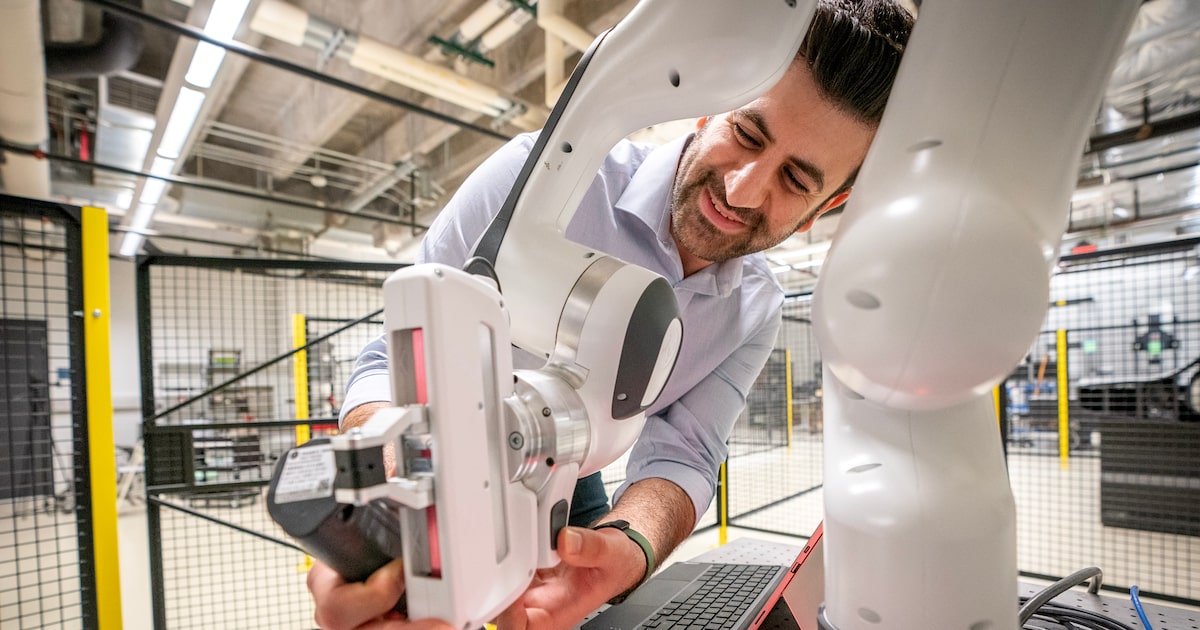This month, the American Federation of Teachers, one of the country’s largest teachers’ unions, announced the launch of an AI training hub for educators in New York City, funded by an endowment of $23 million from Microsoft (Copilot), OpenAI (ChatGPT) and Anthropic (Claude). According to the planners, it will promote hands-on workshops for teachers to use AI tools in critical everyday tasks such as generating lesson plans, as soon as this fall.
With back-to-school right around the corner, I can’t wait to discuss the ramifications of this new AI hub with my principal and colleagues here in Texas, even those who might be skeptical of newfangled innovations.
The AI revolution isn’t just already here, it’s moving into a highly accelerated new phase of implementation within education, in states as varied as California and Florida. This all coincides with a strong push from the executive branch of the federal government, which has been seeking to expand the public-private partnership of AI and schools.
This all leaves me wondering how my own students will be affected and when we can expect a similar investment in an AI partnership here in Texas.
Opinion
Schools are already behind. Students are regularly using AI, and teachers like me are champing at the bit for best practices in using this technology intelligently in the classroom. While most states are already providing guidance around integration, Texas is not one of them.
The “techies” are optimistic: “Reading and writing and arithmetic and learning how to use AI,” said Chris Lehane, OpenAI’s chief global affairs officer. “You’re going to have to learn those skills over time, and I do think our education system is the best place to be able to do that.”
But what do teachers think?
According to a recent Walton Family Foundation/Gallup poll, 6 in 10 teachers have used an AI tool for work in the past year and, in doing so, have saved 5.9 hours per week, the equivalent of 6 weeks per school year. Most of those teachers believe these tools improve the quality of their work, the survey found.
So how do teachers like me harness AI productively? Tools like Khanmigo from well-known study resource Khan Academy can be utilized to refine lesson plans, allowing me to dedicate more time to working with my students in the art of learning. With AI, I can focus less on the product of learning and more on the process, which is best for kids.
Other resources teachers I know are already using include Fobizz, which allows students to dig deeper in specific content areas and get support for exam preparation; Class Companion, which provides students with feedback on written assignments and lab reports that can be vetted by the instructor; and Gamma, which creates the foundation for interactive presentations that can then be refined by the teacher.
What we as teachers cannot do is let the tools think for us, or worse, our students. We need to continue echoing the important skills of checking a source, verifying multiple outlets and asking skeptical questions about what we read. Fortunately, good pedagogues have instilled these skills in their students for decades, at the onset of previous technological revolutions like social media, or even the calculator. Let’s keep forging strong learning relationships with our students that cannot be replicated by any technology.
I am excited about this new AI hub in New York and the teachers who will get to learn about the technology inside its walls. I hope the developers and school partners working there listen to teachers on the ground, using our experiences and expertise in collaboration.
Here at home, let’s jump on board this inescapable new era of education and roll out sensible guidelines that are formulated with robust input from teachers themselves.
Perhaps next session, Texas lawmakers could take up the call and provide direct funding and support for Texas teachers like me in AI incorporation, tying together the shared goals of all stakeholders in preparing kids for this new world.
Most importantly, I hope they bring actual teachers to the table and put them in the room with developers who are seeking to transform the world of education.
The AI era is here in the classroom. Let’s get Texas teachers in the mix. Our students deserve it.
Lance Barasch is a high school math teacher at the Townview School of Science and Engineering in Dallas ISD. He is a Teach Plus Leading Edge Fellow.
